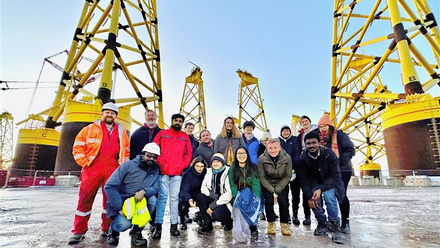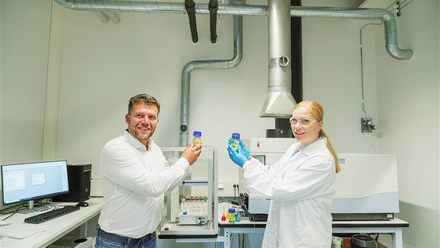Onboard carbon capture to aid deep-sea fleet decarbonisation
The shipping industry is using new methods to tackle its carbon footprint and hit IMO’s greenhouse gas targets.
Stavanger-headquartered Solvang ASA, a leading owner of LPG (liquefied petroleum gas) and petrochemical tonnage, announced in January that it is installing an onboard carbon capture (OCC) system on its LPG carrier Clipper Eris. With OCC, the exhaust is cleaned,â¯reducing CO2 emissions by up to 70 percent, and the captured gas is stored in deck tanks for discharge to sequestration or usage.
Solvang CEO Edvin Endresen hailed the project as a “significant shortcut to [the] decarbonisation of the world’s deep-sea fleet”.
Last year, Evergreen Marine Corp successfully installed an OCC system onboard the Ever Top containership, with the captured CO2 offloaded to a shore facility and recycled. The captured carbon was deducted from the ship’s annual CO2 emissions under the carbon intensity indicator (CII) assessment, demonstrating how the technology can help shipping meets its commitments under IMO’s greenhouse gas strategy which aims to reduce the carbon intensity of shipping by a minimum of 40 percent by 2030.
With that checkpoint now only five years away, there’s real urgency to find solutions. However, several barriers to widespread adoption of OCC include the lack of shoreside infrastructure to receive and sequester or recycle the CO2, the lack of IMO regulation of this emerging technology, and the need for carbon pricing mechanisms to help develop a market for CO2 to underpin investment.
Technically possible, but challenging
“From a technical perspective, OCC is feasible, but it presents challenges in space requirements, energy consumption, and integration with existing ship systems,” says Mathias Sørhaug, Business Development Director CO2 Shipping at DNV.
From an economic perspective, while OCC adds cost, like any other decarbonisation measure, DNV’s 2024 Maritime Forecast shows that if IMO emissions targets are enforced, OCC could be cost-competitive with alternative fuel solutions over time, states Sørhaug.
Some ships are better suited for OCC than others, and while retrofits are possible – as evidenced by the Ever Top and Clipper Eris – its application will be on a case-by-case basis, which is why Sørhaug says there’s interest in ‘OCC-ready’ designs for newbuilds, ensuring they can accommodate capture technology in the future. Indeed, Solvang ASA has seven new vessels under construction, all of which have been designed and ready for installation of OCCS (onboard carbon capture & storage)technology.
The limitations are not just around vessel type; routing is also an issue in order to accommodate shoreside discharge. “Ships on fixed routes or those operating near CCS infrastructure will be the first movers in this space,” explains Sørhaug.
Captured CO2
The majority of the captured CO2 will need to be stored or used in industrial application where it is permanently bound if the technology is to contribute to lower global emissions. Shipowners will need to pay someone for COâ handling services, which will add to operating costs.
The energy transition landscape is still evolving, however, and new opportunities may emerge to earn revenues from the captured COâ. “Some early movers may find opportunities supplying COâ to industries such as greenhouse agriculture,” Sørhaug says. “But these markets are still limited.”
“We anticipate some segments could see broader uptake early in the next decade, but mainstream adoption will require stronger regulatory incentives, carbon pricing mechanisms, and a global COâ transport network.”
For OCC to realise its potential as a cost-effective solution, particularly for deep-sea shipping where other low-carbon options may be limited, there is clearly much work to be done, from a technical, commercial and regulatory point of view.
Tell us what you think about this article by joining the discussion on IMarEST Connect.
Image: Evergreen container ship at sea; credit: Shutterstock.





